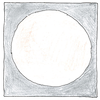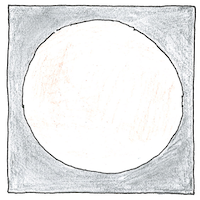Giuseppe Piazzi, Carl Friedrich Gauss
astronomy

|
Discovery of an asteroid
Cataloging the six thousand seven hundred forty-eight bright stars at his observatory in Palermo, Sicily, using the altazimuthal circle made by Jesse Ramsden, Gioacchino Giuseppe Maria Ubaldo Nicolò Piazzi noticed a faint star no one had made a record of. The next night he found it had moved; therefore, he thought it was a comet or a planet, not a star. Charting it for twenty-four days, he decided it was a comet. After a couple weeks more he calculated its orbit was nearly circular, which would make it a planet, but he worried it was too dim for a planet. Guiseppi announced that he had found a comet and he named it “Cerere Ferdinandea” after the patron goddess of Sicily and his own patron, King Ferdinand IV (or maybe the old king, Ferdinand III). This was the first asteroid to be found so people didn’t know what to call it. In 1802 William Herschel coined the term “asteroid,” meaning “star-like.” Now thousands of asteroids have been numbered, and number one thousand is named “Piazzia” after Guiseppi.
Hole in the sky
A planet had been predicted between Mars and Jupiter but it had not been found. Johann Daniel Titius and Johann Elert Bode had predicted it according to the pattern of semi-major axis of known planets. When Piazzi found Ceres, Bode hailed it as the missing planet and so it was considered for half a century. Ceres is by far the largest object in the asteroid belt, and it is spherical, and it orbits around the sun, but because it hasn’t “cleared the neighborhood around its orbit” Ceres is now considered to be a dwarf planet like Pluto.
Ceres
Too faint to be seen with the naked eye Ceres, named after the goddess of grain, harvest, and motherly love, spins beautifully like a jewel impervious to the thoughts of remote observers.



A beautiful color photo of Ceres from NASA’s Hubble Space Telescope, in which each pixel represents 18 kilometers, shows its jewel-like surface. The beauty of the object in space increases my admiration of the goddess Ceres.
Piazzi’s discovery is a good example of a disciplined accident. Like making an informed decision, Piazzi would not have recognized the uniqueness of this spot of light without intense concentration and keen skills. The beauty of his instrument was also a factor; the Science Photo Library has an illustration of Jesse Ramsden’s altazimuthal circle in Palermo.
An object in space must have objective characterstics to be regarded as a planet, or people would be discovering new planets all the time; I might want to discover my own planet. A planet must be spherical, rotate its sun in a circular orbit, and not be a satellite. Too bad for Ceres and Pluto, the International Astronomical Union now says that a planet must clear the neighborhood of its orbit.
In the biographies, Piazzi is characterized as uncertain whether Ceres was a star, a planet, or a comet, but I much prefer Piazzi’s thoughtful and cautious attitude, and the openness of his mind, compared to Johann Elert Bode who claimed (sight unseen) that Piazzi had found exactly what Bode expected.
As an American perhaps, I take a certain delight in repeating the name “Guiseppi,” by which I do not mean to slight any of his other names (six names, each with three syllables).
See also in The book of science:
Readings in wikipedia:
You can find lots of information about Giuseppe Piazzi: